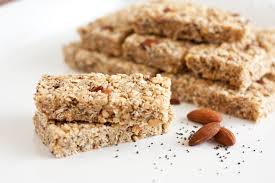 Many individuals diagnosed with type 1 diabetes only discover they have celiac disease through routine screening because of the known relationship between the two conditions. Most report having no symptoms of celiac disease, and that the diagnosis is sometimes seen as an after-thought to the diabetes. Whether or not individuals have symptoms, if a celiac disease diagnosis is confirmed, it is absolutely essential to follow a strict gluten-free diet to avoid the same health risks listed here for untreated celiac disease. Perhaps most important is that the earlier a gluten-free diet is initiated, the lower the chances are of a person developing additional autoimmune disorders.
Many individuals diagnosed with type 1 diabetes only discover they have celiac disease through routine screening because of the known relationship between the two conditions. Most report having no symptoms of celiac disease, and that the diagnosis is sometimes seen as an after-thought to the diabetes. Whether or not individuals have symptoms, if a celiac disease diagnosis is confirmed, it is absolutely essential to follow a strict gluten-free diet to avoid the same health risks listed here for untreated celiac disease. Perhaps most important is that the earlier a gluten-free diet is initiated, the lower the chances are of a person developing additional autoimmune disorders.
It can be very difficult to evaluate the effectiveness of a gluten-free diet in a person without obvious symptoms, and equally as difficult for that person to find the motivation to strictly follow it. Follow-up care with your physician is essential in these cases for monitoring blood antibody levels for celiac disease; a follow-up endoscopy may be indicated to confirm that intestinal healing has occurred. Weight gain or loss, fatigue, neuropathy, and gastrointestinal problems can all be related to either celiac disease or diabetes, so it can be difficult to differentiate between the causes without probing further with your healthcare providers.
Consider the following information when managing a dual-diagnosis of celiac disease and diabetes; with practice you won’t just be managing, you will be thriving!
General Guidelines and Advice
- Work with a knowledgeable and credentialed dietitian (registered dietitian and/or certified diabetes educator). You may get the most personalized advice and successful life changes from working one-on-one with someone you trust.
 Many gluten-free flour substitutes are much higher in carbohydrate content than their gluten-containing counterparts. Gluten-free products may be highly refined and contain added sugars or starches to mimic the mouth-feel and texture of gluten.
Many gluten-free flour substitutes are much higher in carbohydrate content than their gluten-containing counterparts. Gluten-free products may be highly refined and contain added sugars or starches to mimic the mouth-feel and texture of gluten.
- Additional insulin and/or smaller portion sizes may be necessary to counteract these effects when enjoying such products.
- Some gluten-free alternatives are made with very low-carbohydrate substitutes, and thus standard carbohydrate counts are not appropriate. Administering standard estimations of insulin may result in dangerously low blood glucose levels. Instead, read ingredient labels when possible for carb counts, or count the food as a vegetable that is very low in carb and correct with insulin at the next meal if your estimation was too low.
- Example: cauliflower “mashed potatoes” or pizza crust
- Example: almond flour cookies or bread
- Always keep gluten-free carbs on-hand for managing blood glucose in instances where gluten-free foods may be difficult to find.
- For the average person with celiac disease, a salad may be a reasonable option at a restaurant that doesn’t have a gluten-free menu. However, for someone with both diabetes and celiac disease, a salad comprised only of vegetables, meat, and dressing is likely too low in carbohydrate to meet standard meal recommendations for carbohydrates. Always come prepared with additions, or use a beverage (like a smoothie or a latte) as your source of carbohydrate if necessary.
 Non-perishables like granola bars, protein bars, crackers, meal supplement drinks, and dried soybeans are great to keep in your car, pocket, or purse.
Non-perishables like granola bars, protein bars, crackers, meal supplement drinks, and dried soybeans are great to keep in your car, pocket, or purse.- Advise a manager or authority of your medical needs if you need to eat in an establishment that prohibits outside food and cannot accommodate your gluten-free needs. Keep a doctor’s note on-hand for places like the airport, movie theaters, sporting games, conference centers, and amusement parks.
- Follow general dietary advice for health on a gluten-free diet to maximize the nutritional quality of your carbohydrates. Whole grains and unrefined, unprocessed complex carbohydrates will deliver maximum health benefits while helping you to maintain your blood sugar. See more advice and recipes on maximizing health on a gluten-free diet here.
**All recipes featured on celiac.org will now contain approximate nutrition facts including grams of carbohydrate in order to make life easier for those living with diabetes and celiac disease or gluten sensitivity. Please use this as a guideline only, as the use of different ingredients may change the overall carbohydrate content of the final product.